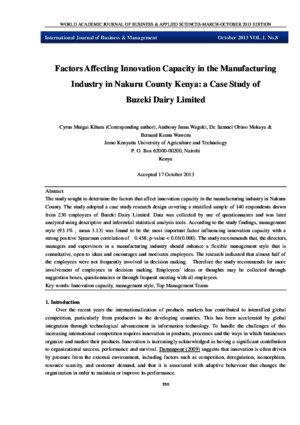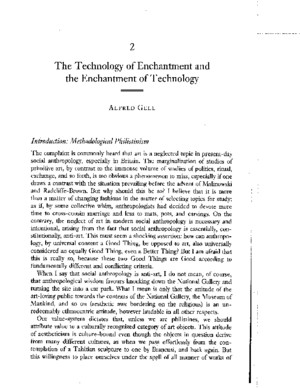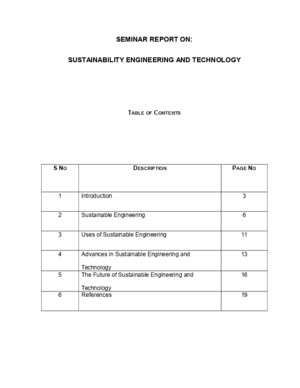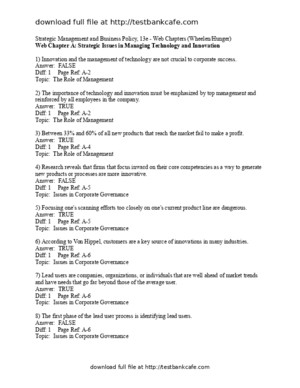Role of Information Technology on Warehouse Management in Kenya a Case Study of Jomo Kenyatta University of Agriculture and Technology
There is document - Role of Information Technology on Warehouse Management in Kenya a Case Study of Jomo Kenyatta University of Agriculture and Technology available here for reading and downloading. Use the download button below or simple online reader.
The file extension - PDF and ranks to the Documents category.
Tags
Related
Comments
Log in to leave a message!
Description
Download Role of Information Technology on Warehouse Management in Kenya a Case Study of Jomo Kenyatta University of Agriculture and Technology
Transcripts
International Journal of Academic Research in Business and Social Sciences November 2014, Vol 4, No 11 ISSN: 2222-6990 188 wwwhrmarscom Role of Information Technology on Warehouse Management in Kenya: A Case Study of Jomo Kenyatta University of Agriculture and Technology Kellen Karimi Prof GS Namusonge Jomo Kenyatta University of Agriculture and Technology PO Box 62000-00200 Nairobi, Kenya College of Human Resource Development, Jomo Kenyatta University of Agriculture and Technology PO Box 62000-00200 Nairobi, Kenya DOI: 106007/IJARBSS/v4-i11/1294 URL: http://dxdoiorg/106007/IJARBSS/v4-i11/1294 ABSTRACT The general objective was to find out factors affecting warehousing management The specific objective was; to determine the effect of information technology on warehouse management The researcher used descriptive research design taking Jomo Kenyatta University of Agriculture and Technology as a case for this study The target population was 930 and a sample size of 50 The sampling design adopted was stratified random sampling Data collection was done by use of questionnaires and informal interviews Majority of respondents (75%), noted that the organization had managed to implement warehouse management system The study recommends continued investment and training in information technology and adoption of better information sharing tools KEY WORDS : Warehouse management, information technology 10 Introduction In the current business world, warehouse management as perceived by the industry today is not just managing within the boundaries of a warehouse; it is much wider and goes beyond the physical boundaries Inventory management, inventory planning, cost management, IT applications communication technology to be used are all related to warehouse management (Bartezzaghi, 2003) Saleemi (2003 ) indicate that container storage, loading and unloading are also covered by warehouse management today which is also part of Supply Chain Management (SCM) and demand good management Even production management is to a great extent dependent on warehouse management Efficient warehouse management gives a cutting edge to a retail chain distribution company Decades ago, warehousing company managers often shopped for "best of breed" technology to manage their facilities and to track inventory Systems were implemented with expectations that they would run effectively for fifteen years or more before requiring upgrades Today, the constant evolution of technology requires a different approach to purchasing warehouse International Journal of Academic Research in Business and Social Sciences November 2014, Vol 4, No 11 ISSN: 2222-6990 189 wwwhrmarscom management solutions Instead of buying a single system rated "very best," managers are happy to purchase exactly what they need right now to evolve and expand their systems (De Boer, 2002) Interoperability and expansion are the key buzzwords right now, since facility managers must be ready to integrate their systems with clients and with other vendors Overall, the trends affecting warehousing services currently stem from end user demands for speed, efficiency, and environmental awareness (Kouvelis, 2006) 11 Problem Statement Well managed warehouse system help an organization keep proper track of inventory, maintain the levels of inventory as per requirement, increase in accuracy, reduce labor costs and ensure proper maintenance as well as storage of stock This kind of management will provide ease and convenience to the suppliers and distributors to keep the track of inventory and maintenance as well (Harold, 2002) Thus, warehouse management is very beneficial in storage and maintenance of stock or inventory Indeed a number of studies indicate that an efficient warehouse management system is crucial to an organization’s operational performance Kerridge, 2006; Larson, 2004; Liao 2007) However, many organizations today have not taken the issue of warehousing into account, storage of goods and distributions from the same warehouses are done haphazardly that is without any order, theft cases have been on the rise giving a compromise on the general ethics of workers, due to the disorganization and inadequate incorporation of modern information technology which come with good warehouse management systems, it has resulted to inaccuracy order management techniques which has dealt a major blow to the organization as a whole (Ackerman, 2008; Cooper, 2002) Information technology has been identified as one of the biggest influencers of the business world today (Bartezzaghi, 2003) Though many believe that information technology mainly benefits large operations that have considerable financial muscle, there is evidence that even small warehouses can benefit from IT innovations This can be achieved through partial automation of their operations through emerging internet based services (Govindarajan, 2007) Organizations are trying their best to cut on costs and increase profitability Warehouse management is one of the areas in which substantial cost savings can be made Warehouse maintenance cost reduction can only be achieved by making appropriate design decisions on the strategic characteristics of warehouse facilities (Kerridge, 2006) It is from these issues that the researcher planned to carry out a study based on the factors affecting warehouse management 12 Objective of the Study The objective was to assess factors affecting warehouse management in Kenya with a specific focus on the role of information technology on warehouse management 20 Literature Review The main aim of the literature review was to explore the available and existing information which had been covered by the various researchers The literature was reviewed from journals, the internet, reference books, working, papers, reports and periodicals International Journal of Academic Research in Business and Social Sciences November 2014, Vol 4, No 11 ISSN: 2222-6990 190 wwwhrmarscom 21 Theoretical Framework 211 Management Theory Different theories have been forwarded to explain the concept of management by different researchers According to the behavioral theory, management refers to the rule of game within the society/organization which configure individual behaviors, in so doing reducing the uncertainty of risks and transaction costs linked with each individual action Management science theorists like Herbert and Newman, define management as the application of sophisticated quantitative mathematical techniques for solving managerial problems Under this theory, an Organization is considered a decision making unit and the main job of a manager is to make decisions and solve problems It therefore assumes a mathematical model which is a representation of real life situation Elsewhere, the term management refers to activities involved in the four general functions of a manager which recur throughout the Organization and are highly integrated These activities are planning, co-coordinating, leading and controlling It is therefore universal and focuses more on leadership skills The management of the warehouse function in Jomo Kenyatta University of Agriculture and Technology lies with the Chief Procurement Officer and the officer in-charge of central stores They are assisted by other operational officers under them but they bear the managerial responsibility 22 Information Technology Warehouse Management Systems (WMS) have been available since the earliest computer systems and were allowed simple storage location functionality Today WMS systems can be standalone or part of an Enterprise Resource Planning (ERP) system and can include complex technology such as Radio Frequency Identification (RFID) and voice recognition However the basic principle of the warehouse system has remained the same, which is to provide information to allow efficient control of the movement of materials within the warehouse The implementation of a WMS is often complex Project planning is critical to the success of any WMS implementation The project requires warehouse resources to collect data on the physical warehouse, materials, inventory as well as defining the strategies required to operate the warehouse There is the added challenge of implementing the system whilst still operating the warehouse (Kerridge, 2006) The complexity of a WMS implementation varies with every business The physical dimensions and characteristics of each item in the warehouse are required to be collected and entered into the new system According to Hamzah (2001), capacity calculations require the physical size and weight of the item as well as the dimensions of all the storage bins or racks in the warehouse The storage options for each item are required, for example if the item can be stored separately, in box, pallet or if it can be stacked Each item must be reviewed to see if it is physical limitations on its storage, such as requiring refrigeration Hazardous material information needs to be collected so that the item is not stored in certain areas This information is only part of the requirements of the WMS implementation The system requires decisions or configuration to be made on how items are to be placed or removed from the system, in what order, for what types of materials and what methods of placement and removal should be used (Hamzah 2001) The implementation requires significant input from the












![Sílabo de Antropología Urbana (2013-1) [Golte, Jacinto] - Escuela de Antropología, Universidad Mayor de San Marcos](imgdoc/89343.jpg)


